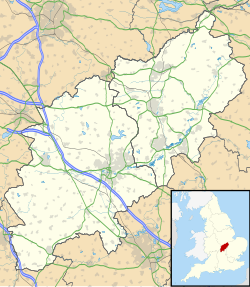| Thorpe Lubenham | |
|---|---|
 Entrance to Thorpe Lubenham Hall | |
Location within Northamptonshire | |
| Civil parish | |
| Unitary authority | |
| Ceremonial county | |
| Region | |
| Country | England |
| Sovereign state | United Kingdom |
Thorpe Lubenham is a deserted settlement and former civil parish, now in the parish of Marston Trussell, in the West Northamptonshire district, in the ceremonial county of Northamptonshire, England. In 1931 the parish had a population of 33. [1]
Contents
Thorpe Lubenham lies to the south of the Leicestershire village of Lubenham and south of the River Welland which forms the county boundary.
Thorpe Lubenham was formerly an extra-parochial tract, [2] from 1858 Thorpe Lubenham was a civil parish in its own right until it was abolished on 1 April 1935, and merged with Marston Trussell. [3]
